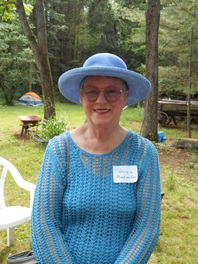The kigo is a powerful poetic device used in haiku. Using examples, Machmiller plans to show how, by using the kigo, a writer can create a mood or imbue the haiku with a subtle perfume that scents the whole poem. The examples will demonstrate how haiku without kigo can be improved by the adding a kigo.
The paper will show the versatility of the kigo—how it unifies, perfumes, imparts layers of meaning, and/or creates a mood or backdrop for the haiku image. Through this device the haiku is able to more readily touch our hearts; the kigo brings to the haiku an intuitive quality that makes it more mysterious, more enigmatic, yet more profound. It adds complexity and richness. These assertions will be accompanied by numerous examples to demonstrate how this works.
For example by taking four poems (one set in each season) she will discuss how the tenor of each is influenced by its kigo. Then she will show how the sense and scent of each poem would change if kigo from a different season were chosen as well as contrasting each with the same image without a kigo.
Patricia J. Machmiller is a haiku poet, artist, and teacher of haiku. With Jerry Ball she writes a column of haiku commentary in GEPPO. She has a number of books, including a book of haiku, Blush of Winter Moon, Jacaranda Press (San Jose, 2001) and with Fay Aoyagi, translations from the Japanese of Kiyoko Tokutomi’s haiku, Kiyoko’s Sky, Brooks Books (Decatur, Ill, 2002).

 RSS Feed
RSS Feed
